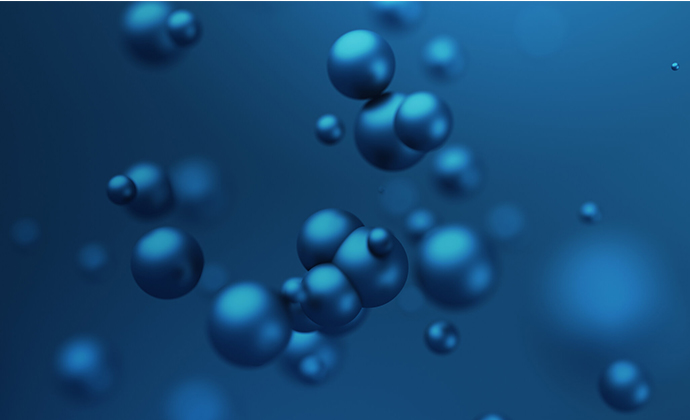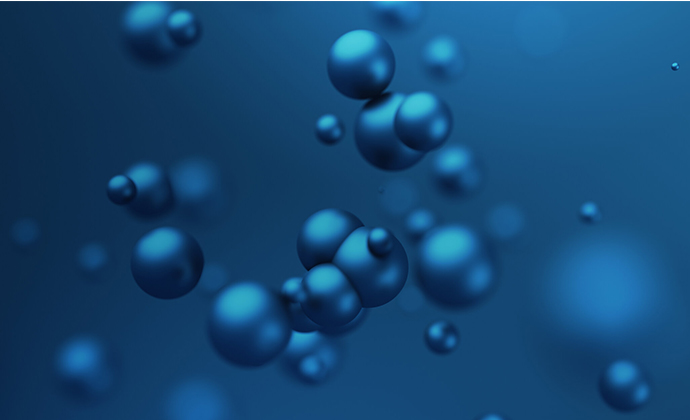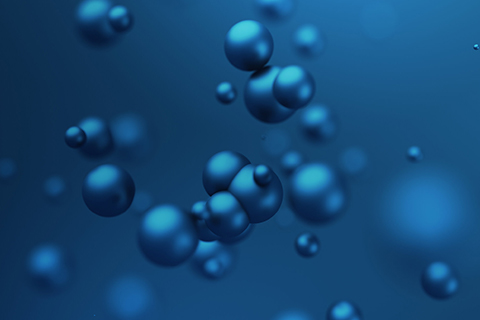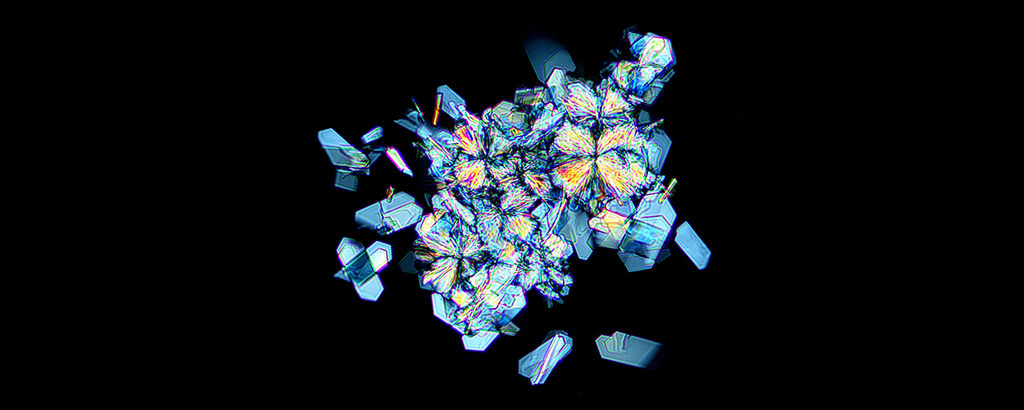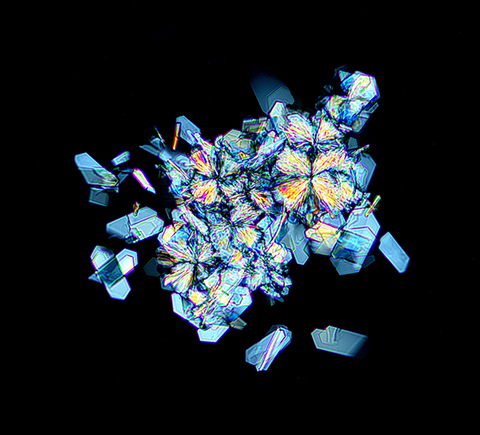Nicotinamide Riboside (NR): What Is It?
Updated on May 8, 2024 Reviewed by Scientific Affairs Team Nicotinamide riboside (NR) is a form of vitamin B3 but is structurally and biochemically different from niacin (NA) and nicotinamide (NAM), the other vitamin B3 alternatives.
Vitamin B3 is an essential micronutrient that is required to maintain your levels of NAD+ (nicotinamide adenine dinucleotide).
NR is what is known as a vitamin precursor to NAD+, which means it is a substance that can be converted into NAD+ within the body through metabolic processes.
What is NAD?
NAD+ is a vital coenzyme that acts as an essential partner in cellular energy production and mitochondrial health.
As a coenzyme, NAD+ works alongside several enzymes in the mitochondrial membrane, such as those involved in the electron transport chain, enabling efficient energy conversion processes.
The prefix “co-” in its name highlights its cooperative role and underscores the significance of coenzymes in cellular energy metabolism.
Coenzymes like NAD+ (and its precursor NR) are your enzymes’ best friends. NAD+ benefits include helping fuel the “cellular machine” that creates the energy needed by every major function in your body on a cellular level.
Ready to support your body's vitality? Learn more about the benefits of NAD+ and NR.
Why is NAD+ important?
Due to its critical role in cellular energy production, the absence of NAD+ would halt most bodily functions. Without NAD+, your lungs wouldn’t be able to draw in oxygen, your heart wouldn’t be able to pump blood, and your brain synapses wouldn’t be able to fire.
NAD+ also helps facilitate DNA repair and regulate cellular activity by working with sirtuins and poly (ADP-ribose) polymerases (PARPs), key enzymes involved in regulating cells’ response to damage from things like overeating, drinking, sleep disruption, and sedentary patterns.
NR is known to boost NAD+ levels, which is essential for cellular repair and mitochondrial health. The synergy between NR and NAD+ plays a pivotal role in DNA repair and energy production.
Explore how nicotinamide riboside (NR) supplements can elevate your NAD+ levels.
NAD+ and Aging
Age-Associated Changes in NAD+ Metabolism
Research in 2012 from a team at the Department of Pharmacology at the University of New South Wales showed age-associated changes in NAD+ metabolism. The study revealed that NAD+ levels decline by up to 50% in human skin tissue between the ages of 40 and 60 and that NAD+ depletion may play an important role in the aging process.
Research Findings on NAD+ and Aging
In the paper, the researchers stated, “A strong negative correlation was observed between NAD+ levels and age in both males and females.”
In addition, NAD’s involvement in cellular respiration, particularly in the mitochondria, contributes to overall mitochondrial health. And the scientific community holds a keen interest in NAD+’s involvement in mitochondrial dysfunction, one of the hallmarks of aging.
In recent years, research has focused on understanding NAD+'s role in addressing these age-associated functional declines.
By providing a precursor for NAD+ synthesis, NR (nicotinamide riboside) offers a natural way to boost NAD+ levels, potentially slowing down the aging process.
Discover the benefits of NR supplements for aging.
Nicotinamide Riboside Increases NAD+ Levels
Understanding the relationship between NR and NAD+ is key to understanding how NR functions as a building block to the NAD+ molecule.
Here’s how it works:
As stated earlier, NR, nicotinamide riboside, is what is known as a vitamin precursor to NAD+, which means it is a substance that can be converted into NAD+ within the body through metabolic processes.
As a result of NR supplementation, more NAD+ is available to participate in various metabolic processes, including energy production, DNA repair, and cellular signaling.
The discovery of NR as a precursor of NAD+ in 2004 makes it one of the greatest breakthroughs in NAD+ research.
NR is a naturally occurring vitamin as a novel form of vitamin B3, but its applications as a supplement have gained headwinds as a healthy-aging vitamin. It’s highly efficient at boosting NAD+, making it one of the most exciting healthy-aging solutions.
NIAGEN, a nature-identical patented form of NR, effectively elevates NAD+ levels. A clinical trial published in Scientific Reports shows that NIAGEN increases NAD+ up to 50% after two weeks.
Find out more about NAD+ and aging.
NAD+ Is Not a Great Standalone Supplement
Although supplementation with NR, or nicotinamide riboside, is clinically proven to increase NAD+ levels, supplementing with NAD+ as a standalone ingredient is not so effective. NAD+ supplementation encounters obstacles related to both its bioavailability and stability.
NAD+ vs NR
NAD+ bioavailability is subpar. NAD+ is a very large molecule that is unable to enter the cell directly. Instead, your body must first break it down into smaller pieces before passing through the cell membrane. It then has to be reassembled inside of the cell.
Compared to standalone NAD+, NR supplementation presents a superior alternative by efficiently elevating NAD+ levels without requiring breakdown before entering cells.
Also, in capsule form, NAD+ as a straight ingredient quickly degrades when exposed to light and heat.
Learn more about NR's health benefits.
Can We Get Nicotinamide Riboside Naturally?
While certain foods contain NR, it's important to note that the levels of NR in dietary sources are generally low, and consuming them alone may not provide significant amounts of NR.
For example, while NR is found in milk, it would take 87 gallons to equal the 300mg found in one Tru Niagen capsule.
NR supplementation may be necessary to achieve meaningful increases in NAD+ levels.
It’s important to remember the relationship between NAD+ and NR, as increasing your intake of NR directly influences the elevation of NAD+ levels in your body.
Some natural sources of NR include:
Milk: NR has been identified in milk, particularly in cow's milk.
Yeast: Brewer's yeast contains NR, although the levels may vary.
Unfortunately, there is no new data on the amount of NR measured in brewer’s yeast, but the quantities would likely still be insignificant compared to a capsule of NR.
Currently, the best way to take NR is in supplement form. Science points to NR supplements as an efficient way to achieve the quality benefits of increased NAD+ from NR.
300mg of Niagen, our patented form of nicotinamide riboside (NR), is the minimum recommended amount. Taking 1,000mg may further increase NAD+. Both servings are safe and effective.
Learn more about natural sources of NR.
How Safe Is Nicotinamide Riboside?
There are several supplements on the market that contain NR nicotinamide riboside as an active ingredient. However, NIAGEN is the only form of NR that has been successfully notified to the Food and Drug Administration (FDA).
FDA NDIN (New Dietary Ingredient Notification)
NIAGEN NR has been successfully reviewed twice under the FDA’s New Dietary Ingredient Notification (NDIN) program.
Achieving FDA acceptance of an NDIN is a major accomplishment as it is a highly rigorous safety review process. Few companies that do submit an NDIN to the FDA received a no-objection.
The NDIN is quite extensive, but here are some of the details that must be included:
The name of the new dietary ingredient. If the new dietary ingredient is an herb or other botanical, the Latin binomial name (including the author), must be included.
A description of the dietary supplement or dietary supplements that contain the new dietary ingredient, including the:
level of the new dietary ingredient in the product.
conditions of use of the product recommended or suggested in the labeling, or if no conditions of use are recommended or suggested, the ordinary conditions of use.
history of use or other evidence of safety establishing that the dietary ingredient, when used under the conditions recommended or suggested in the labeling of the dietary supplement, will reasonably be expected to be safe.
FDA GRAS (Generally Recognized As Safe)
When it comes to NR safety, NIAGEN is the only form of NR to be successfully notified to the FDA as Generally Recognized As Safe (GRAS). An FDA no-objection to a GRAS notification is also a recognition of the quality of the science and the safety of the ingredient.
In addition to receiving approval for use in medical foods by the Brazilian Health Regulatory Agency (ANVISA), NIAGENhas also been approved for use in food supplements by the European Commission, complementary medicines by the Therapeutic Goods Administration of Australia (TGA), and medical foods by the Food Standards Australia New Zealand (FSANZ). Tru Niagen has also been approved by Health Canada as a Natural Health Product.
Research NIAGEN NR products.
As for products on the shelf, Tru Niagen, which features NIAGEN NR, bears the NSF Certified for Sport seal on Stick Packs and Tru Niagen Pro 1,000mg products.
The Process of Obtaining NSF Certified for Sport Certification Includes:
A thorough review of the product’s formulation, labeling, and manufacturing processes.
Laboratory testing conducted to ensure the product meets the required safety and quality standards.
Evidence of Good Manufacturing Practices (GMPs), including an on-site audit at the brand’s manufacturing facilities to ensure effective quality control systems. The audit also includes a review of the brand’s documentation and records to ensure compliance with NSF standards.
Regular inspections and testing for ongoing compliance with the standards.
If the product and manufacturing facilities meet all the requirements, NSF Certified for Sport certification is granted to the sports supplement brand.
The NSF Certified for Sport certification includes current Good Manufacturing Practice (cGMP) certification of the Tru Niagen manufacturing facility and testing to confirm the absence of over 270 athletic banned substances and harmful contaminants like lead and arsenic.
Rules of Current Good Manufacturing Practice (cGMP) for Certified Supplements Include:
Requires certain activities in manufacturing, packaging, labeling and holding of dietary supplements to ensure that a dietary supplement contains what it is labeled to contain, and is not contaminated with harmful or undesirable substances such as pesticides, heavy metals, or other impurities.
Requires certain activities that will ensure the identity, purity, quality, strength, and composition of dietary supplements, which is a significant step in ensuring consumers are purchasing the type and amount of ingredients declared.
cGMP regulations require manufacturers to take proactive steps to guarantee the identity, strength, quality, and purity of their athletic supplements for complete supplement safety.
Learn more about the certification process.
Nicotinamide Riboside vs. Other Vitamin B3s
NR is a novel form of vitamin B3. So how does it stack up to the other vitamin B3s like niacin (NA) or nicotinamide (NAM)?
Niacin and nicotinamide have been around for many years and appear in many different products, such as multivitamins and breakfast cereals. As such, the FDA considers these vitamin B3 forms to be safe and has “grandfathered” their use.
Both niacin and nicotinamide are vitamin precursors to NAD+. But among NAD+ precursors, NR appears to have special attributes. These include better tolerance and better efficiency.
Efficiency in NAD+ Production
Nicotinamide riboside (NR) is considered a more efficient precursor to NAD+ compared to niacin (nicotinic acid) due to its simplicity in building NAD+. NR bypasses several steps that niacin has to go through to create NAD+ because of the specific biochemical pathways involved in its conversion.
Here's how NR stands out:
Efficient Conversion: NR is converted to NAD+ via a relatively straightforward pathway. When NR enters the cell, it is phosphorylated by nicotinamide riboside kinase (NRK) to form nicotinamide mononucleotide (NMN), which is then converted to NAD+ by NMN adenylyltransferase (NMNAT).
No Inhibition of Enzymes: Nicotinamide, a breakdown product of NAD+, inhibits repair enzymes, which can negatively impact cellular health. NR instead has been shown to activate cellular repair activity.
Less Energy Consumption: The conversion of niacin into NAD+ requires energy-consuming steps. NR, on the other hand, requires fewer energy-consuming processes for its conversion into NAD+, making it a more efficient precursor.
Research suggests that enzymes involved in the conversion of NA and NAM to NAD+ decline with age and exposure to stressors. In contrast, stressed cells seek out NR to replenish depleted NAD+ following exposure to damage-inducing stress.
Overall, the simpler and more direct conversion pathway, reduced energy expenditure, and reliance on NR in times of cellular stress make NR a more efficient precursor to NAD+ compared to niacin or nicotinamide.
Find more information on NR vs. other B3s.
Safety and Side Effects
In terms of side effects, niacin and nicotinamide are not ideal. High doses of niacin can cause the skin to flush, and people may experience an itching or hot, prickly sensation on the skin.
Although nicotinamide has no visibly noticeable side effects, studies suggest nicotinamide can inhibit sirtuin activity, negatively impacting mitochondrial health and cellular repair.
NIAGEN NR reports no attributable adverse effects during published clinical studies.
Nicotinamide Riboside vs. NMN: Is NR Better Than NMN?
NIAGEN, our patented form of nicotinamide riboside (or NR), and NMN (nicotinamide mononucleotide) are two of the most prominent NAD+ precursors on the market today. While it’s in our interest to promote NR and NR benefits, it’s also important to note that NMN does fall short as a dietary supplement when it comes to quality, scientific rigor, and regulatory acceptance.
In recent years, NAD+ has come to the forefront of research on aging, health, and disease. However, the popularity of NAD+ supplements has unfortunately led to misinformation about NAD+ and NAD+ precursors. An NAD+ precursor is a building block that enables the cell to create NAD+.
Here’s what makes NR a superior precursor to NMN when it comes to building NAD+.
Orally consumed NMN is technically a precursor to nicotinamide riboside and must be converted to NR before it can pass through cell membranes. Inside the cell, the NR converts back to NMN, and then to NAD+. Given that NR can enter cells, this distinction is important to make when it comes to efficiency. This has been shown in a study on NMN’s metabolism in mammalian cells, indicating that due to a phosphate group attached to the molecule, NMN cannot enter cells directly and must convert into NR before it enters.
And while NMN (nicotinamide mononucleotide) is often pitted against NR, per the U.S FDA, NMN is now “excluded from the definition of a dietary supplement.” This means that despite its recent popularity, it is no longer allowed to be sold in supplement products.
Unlike NMN, NIAGEN NR has 30+ published human clinical studies to date, more than 10 of which show that it effectively and safely increases NAD+ levels.
Discover the differences between NR and NMN.
Frequently asked questions (FAQs)
Some of the most frequently asked questions about Tru Niagen are:
What is Tru Niagen?
What is the recommended serving size?
What should I expect from taking Tru Niagen
Is Tru Niagen natural?
Are there any side effects?
If you would like the answers to these and even more FAQs, you can find them here.
The Future of Nicotinamide Riboside
General interest in NAD+ and aging has garnered more interest in NAD+ research in recent years, and NR’s unique property of efficiently elevating NAD+ levels makes it an exciting prospect in scientific research.
Clinical trials continue to investigate the potential benefits of increased NAD+ levels. Also, NAD+ has been receiving media coverage from news sources that investigate its healthy-aging and cellular-energy-boosting capabilities.
Currently, many studies are underway surrounding the positive effects of NR on other health issues, examining the impact of NR on brain health, muscle function, and heart health.
It’s only a matter of time before NR starts to raise possibilities as a more holistic approach to wellness.
Explore the impact of NR on health.
Related Posts





Is Nicotinamide Riboside Really an Anti-Aging Supplement?
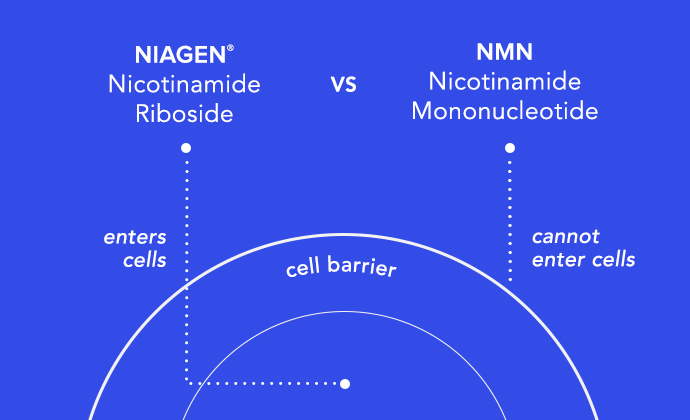


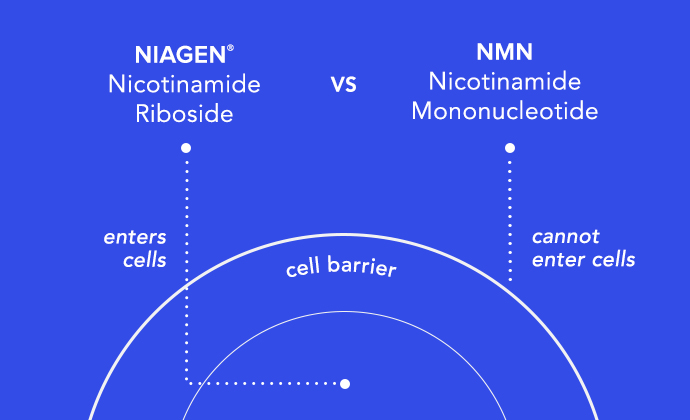
Nicotinamide Riboside vs. NMN: Comparing Science and Quality Standards
